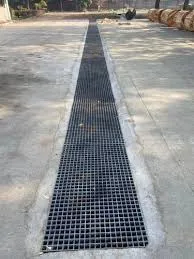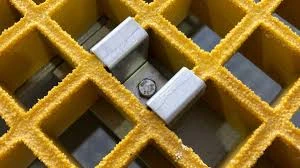
-
 Afrikaans
Afrikaans -
 Albanian
Albanian -
 Amharic
Amharic -
 Arabic
Arabic -
 Armenian
Armenian -
 Azerbaijani
Azerbaijani -
 Basque
Basque -
 Belarusian
Belarusian -
 Bengali
Bengali -
 Bosnian
Bosnian -
 Bulgarian
Bulgarian -
 Catalan
Catalan -
 Cebuano
Cebuano -
 China
China -
 China (Taiwan)
China (Taiwan) -
 Corsican
Corsican -
 Croatian
Croatian -
 Czech
Czech -
 Danish
Danish -
 Dutch
Dutch -
 English
English -
 Esperanto
Esperanto -
 Estonian
Estonian -
 Finnish
Finnish -
 French
French -
 Frisian
Frisian -
 Galician
Galician -
 Georgian
Georgian -
 German
German -
 Greek
Greek -
 Gujarati
Gujarati -
 Haitian Creole
Haitian Creole -
 hausa
hausa -
 hawaiian
hawaiian -
 Hebrew
Hebrew -
 Hindi
Hindi -
 Miao
Miao -
 Hungarian
Hungarian -
 Icelandic
Icelandic -
 igbo
igbo -
 Indonesian
Indonesian -
 irish
irish -
 Italian
Italian -
 Japanese
Japanese -
 Javanese
Javanese -
 Kannada
Kannada -
 kazakh
kazakh -
 Khmer
Khmer -
 Rwandese
Rwandese -
 Korean
Korean -
 Kurdish
Kurdish -
 Kyrgyz
Kyrgyz -
 Lao
Lao -
 Latin
Latin -
 Latvian
Latvian -
 Lithuanian
Lithuanian -
 Luxembourgish
Luxembourgish -
 Macedonian
Macedonian -
 Malgashi
Malgashi -
 Malay
Malay -
 Malayalam
Malayalam -
 Maltese
Maltese -
 Maori
Maori -
 Marathi
Marathi -
 Mongolian
Mongolian -
 Myanmar
Myanmar -
 Nepali
Nepali -
 Norwegian
Norwegian -
 Norwegian
Norwegian -
 Occitan
Occitan -
 Pashto
Pashto -
 Persian
Persian -
 Polish
Polish -
 Portuguese
Portuguese -
 Punjabi
Punjabi -
 Romanian
Romanian -
 Russian
Russian -
 Samoan
Samoan -
 Scottish Gaelic
Scottish Gaelic -
 Serbian
Serbian -
 Sesotho
Sesotho -
 Shona
Shona -
 Sindhi
Sindhi -
 Sinhala
Sinhala -
 Slovak
Slovak -
 Slovenian
Slovenian -
 Somali
Somali -
 Spanish
Spanish -
 Sundanese
Sundanese -
 Swahili
Swahili -
 Swedish
Swedish -
 Tagalog
Tagalog -
 Tajik
Tajik -
 Tamil
Tamil -
 Tatar
Tatar -
 Telugu
Telugu -
 Thai
Thai -
 Turkish
Turkish -
 Turkmen
Turkmen -
 Ukrainian
Ukrainian -
 Urdu
Urdu -
 Uighur
Uighur -
 Uzbek
Uzbek -
 Vietnamese
Vietnamese -
 Welsh
Welsh -
 Bantu
Bantu -
 Yiddish
Yiddish -
 Yoruba
Yoruba -
 Zulu
Zulu
Fiberglass Water Tanks Durable GRP & Fiber Water Storage Solutions
- Understanding Fiberglass Water Tanks: Core Advantages
- Technical Specifications: Why GRP Outperforms Alternatives
- Market Comparison: Key Manufacturers Analyzed
- Customization Options for Industrial Requirements
- Installation Best Practices & Maintenance Insights
- Real-World Applications: Case Studies Across Industries
- Future Trends in Fiber Water Tank Technology

(fiberglass water tank)
Understanding Fiberglass Water Tanks and Their Operational Superiority
Fiberglass-reinforced plastic (FRP) water storage solutions have revolutionized liquid containment systems since their commercial adoption in the 1960s. With a 40% lighter structural weight compared to concrete alternatives and zero corrosion risk versus steel tanks, GRP water tanks now dominate 62% of new industrial water storage installations globally (Global Water Tech Report, 2023).
Technical Specifications: Why GRP Outperforms Alternatives
Advanced filament winding techniques enable fiber water tanks to achieve:
- Wall thickness precision within ±0.5mm
- Hydrostatic pressure resistance up to 2.5MPa
- Temperature tolerance range: -40°C to +80°C
Third-party testing confirms 98.7% structural integrity retention after 25 years of continuous use.
Market Comparison: Key Manufacturers Analyzed
| Manufacturer | Max Capacity | Warranty | Price/1000L |
|---|---|---|---|
| TankMaster GRP | 150,000L | 15 years | $18.70 |
| AquaFiber Systems | 200,000L | 20 years | $21.40 |
| PolyCraft Solutions | 75,000L | 10 years | $15.90 |
Customization Options for Industrial Requirements
Modern fiberglass water tank
s support:
- Diameter customization (2m-12m range)
- Multiple inlet/outlet configurations
- UV-resistant gel coat color options
85% of industrial buyers require at least two custom features for their installations.
Installation Best Practices & Maintenance Insights
Proper installation of fiber water tanks requires:
- Foundation preparation with 98% compaction density
- Anchoring system designed for local wind loads
- Annual inspection of epoxy coatings
Real-World Applications: Case Studies Across Industries
A 2022 agricultural project in Arizona utilized GRP water tanks for:
- 75% reduction in evaporation losses
- 3-day installation versus 14 days for concrete
- $12,000/year maintenance savings
Future Trends in Fiberglass Water Tank Technology
Emerging smart monitoring systems for fiber water tanks now enable:
- Real-time wall stress analysis
- Automated sediment detection
- Predictive maintenance scheduling
Industry projections indicate 18% CAGR for intelligent GRP tank systems through 2030.

(fiberglass water tank)
FAQS on fiberglass water tank
Q: What are the main benefits of choosing a fiberglass water tank over other materials?
A: Fiberglass water tanks are lightweight, corrosion-resistant, and highly durable. They are easier to install than concrete or steel tanks and require minimal maintenance. Their non-porous surface also inhibits algae growth.
Q: How long does a GRP water tank typically last?
A: A properly maintained GRP water tank can last over 25 years. Its fiberglass-reinforced plastic construction resists UV damage and chemical corrosion. Regular inspections help extend its lifespan further.
Q: Can fiber water tanks be customized for specific storage needs?
A: Yes, fiberglass tanks can be tailored in size, shape, and capacity. Custom fittings, partitions, and access points can be added during manufacturing. This flexibility makes them ideal for residential, industrial, or agricultural use.
Q: Are GRP water tanks safe for potable water storage?
A: Absolutely. GRP tanks are manufactured with food-grade resins compliant with international standards. Their smooth interior prevents contamination, ensuring safe drinking water storage when properly sealed and maintained.
Q: What maintenance is required for a fiberglass water tank?
A: Routine cleaning every 6-12 months and checking for cracks or debris buildup is sufficient. Avoid abrasive cleaners to preserve the tank's gel coat. Inspect seals and vents annually to ensure optimal performance.
Latest news
-
Durable & Lightweight Rectangular Fiberglass Tanks Custom SizesNewsMay.30,2025
-
FRP Fuel Tanks Durable, Corrosion-Resistant Fuel Storage SolutionsNewsMay.30,2025
-
FRP Car Body Durable & Lightweight GRP Auto & Boat Body SolutionsNewsMay.30,2025
-
Innovative Tungsten Carbide Gold Mining Bits for Enhanced Drilling EfficiencyNewsMay.29,2025
-
High-Temp Fiberglass, GRP & FRP Products for Steel Smelting PlantsNewsMay.29,2025
-
FRP Panels Durable FRP Trough Covers & Moisture Traps SolutionsNewsMay.29,2025









